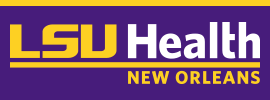Location
LSUHSC - New Orleans
Event Website
https://publichealth.lsuhsc.edu/honorsday/2024/default.aspx
Start Date
2-4-2024 9:00 AM
Description
BACKGROUND: Low-dose computed tomography (LDCT) screening is recommended for high-risk smokers to decrease lung cancer-related mortality and increase prognosis. However, the uptake of LDCT screening among eligible smokers is suboptimal. The impacts of social-environmental and individual factors on LDCT screening uptake using nationally representative datasets recommendations are understudied.
OBJECTIVES: The current study investigated multi-level factors associated with the utilization of LDCT screening using national data. Specifically, the study aimed to identify racial, economic, educational, and gender disparities in LDCT uptake. METHODS: The 2017-2021 Behavioral Risk Factor Surveillance System (BRFSS) data, SDOH(HDPulse), and other state-level variables were applied. Our study outcome is the utilization of LDCT screening among study participants who met the US Preventive Services Task Force guidelines for lung cancer screening. An analysis of 15640 respondents from 29 states were weighted to account for the BRFSS’ complex sampling design.
RESULTS: The overall US LDCT screening utilization rate is 18.4%, with rates varying by state (6.2 -31.1%). Individuals aged 75-79 years (OR=0.46, p
CONCLUSION: Utilization of LDCT screening among eligible smokers remains low. Surprisingly, most of our demographic and social economic variables yielded insignificant results; however, our study found that LDCT screening is associated with inadequate access to routine health care, a personal physician, and financial burdens accompanied with seeking healthcare. RECOMMENDATIONS: Associated LDCT screening risk factors can be used to guide future lung cancer screening programs or revise screening guidelines. Future stratification of nationally representative datasets may also highlight disparities.
Recommended Citation
Witmeier, Kelsey N.; Tseng, TS; Li, CCP; Lin, HY; Zeng, C; Chiu, YW; Celestin, M; and Trapido, E, "Factors Associated with LDCT Lung Cancer Screening in the United States" (2024). School of Public Health Delta Omega Honors Day Poster Sessions. 11.
https://digitalscholar.lsuhsc.edu/dohd/2024/2024/11
Factors Associated with LDCT Lung Cancer Screening in the United States
LSUHSC - New Orleans
BACKGROUND: Low-dose computed tomography (LDCT) screening is recommended for high-risk smokers to decrease lung cancer-related mortality and increase prognosis. However, the uptake of LDCT screening among eligible smokers is suboptimal. The impacts of social-environmental and individual factors on LDCT screening uptake using nationally representative datasets recommendations are understudied.
OBJECTIVES: The current study investigated multi-level factors associated with the utilization of LDCT screening using national data. Specifically, the study aimed to identify racial, economic, educational, and gender disparities in LDCT uptake. METHODS: The 2017-2021 Behavioral Risk Factor Surveillance System (BRFSS) data, SDOH(HDPulse), and other state-level variables were applied. Our study outcome is the utilization of LDCT screening among study participants who met the US Preventive Services Task Force guidelines for lung cancer screening. An analysis of 15640 respondents from 29 states were weighted to account for the BRFSS’ complex sampling design.
RESULTS: The overall US LDCT screening utilization rate is 18.4%, with rates varying by state (6.2 -31.1%). Individuals aged 75-79 years (OR=0.46, p
CONCLUSION: Utilization of LDCT screening among eligible smokers remains low. Surprisingly, most of our demographic and social economic variables yielded insignificant results; however, our study found that LDCT screening is associated with inadequate access to routine health care, a personal physician, and financial burdens accompanied with seeking healthcare. RECOMMENDATIONS: Associated LDCT screening risk factors can be used to guide future lung cancer screening programs or revise screening guidelines. Future stratification of nationally representative datasets may also highlight disparities.
https://digitalscholar.lsuhsc.edu/dohd/2024/2024/11

